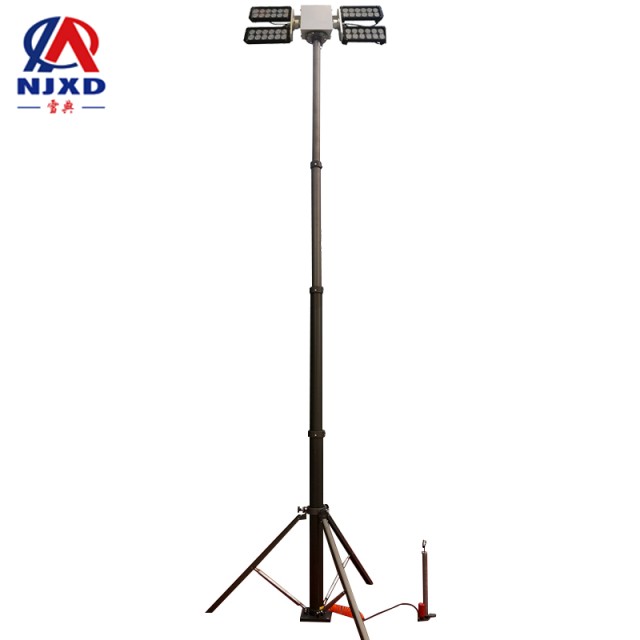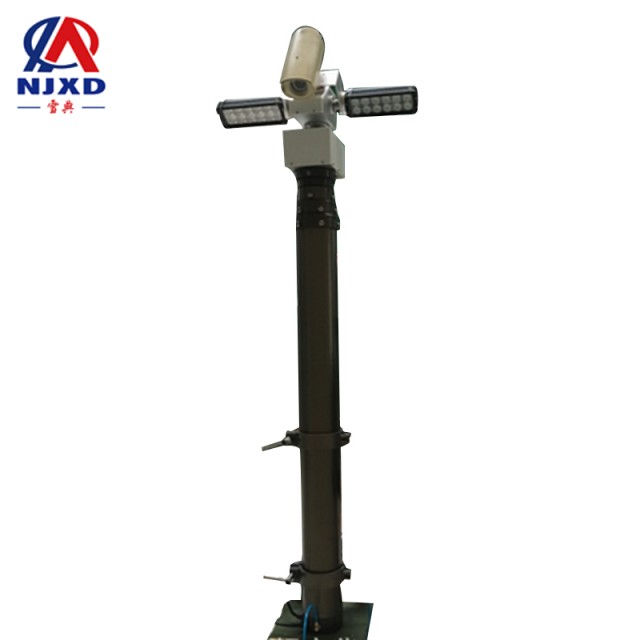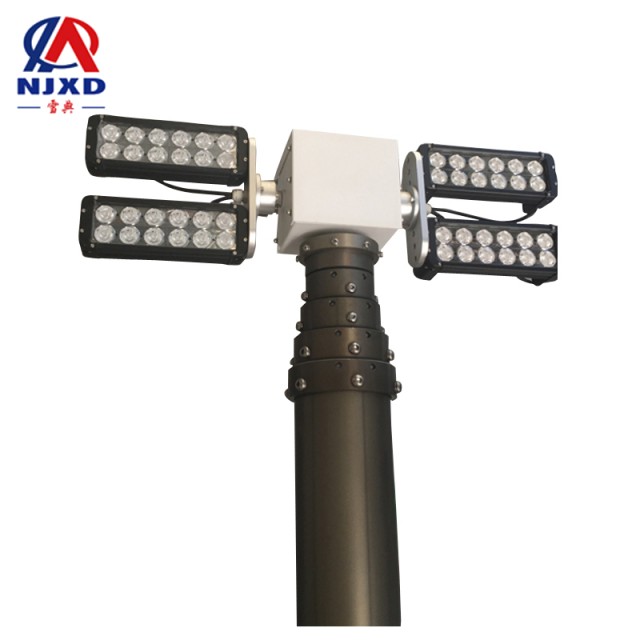NEWS
Basic Characteristics of LED light source lifting lighting pole
Time:2021-03-22 View:

LED Light source (LED refers to Light Emitting Diode) is LED Light source. This kind of light source has the advantages of small volume, long service life, high efficiency, and can be used continuously for up to 100,000 hours. In the future, the application of LED light source in the lighting field will also become the mainstream.
Introduction
LED Light source (LED refers to Light Emitting Diode) is LED Light source. This kind of light source has the advantages of small volume, long service life, high efficiency, and can be used continuously for up to 100,000 hours. In the future, the application of LED light source in the lighting field will also become the mainstream.
Basic features
1. High luminous efficiency
After decades of technical improvement, the luminous efficiency of LED has been greatly improved. Incandescent lamp, tungsten halogen lamp luminous efficiency is 12-24 lumens/watt, fluorescent lamp 50-70 lumens/watt, sodium lamp 90-140 lumens/watt, most of the power consumption becomes thermal losses. After improvement, the LED light efficiency will reach 50~200 lumens/watt, and its light has good monochromaticity and narrow spectrum, which can directly emit colored visible light without filtering. All countries in the world have stepped up the research on improving the luminous efficiency of LED, and its luminous efficiency will be greatly improved in the near future.
2. Low power consumption
LED single tube power 0.03~0.06W, DC drive, single tube drive voltage 1.5~3.5V, current 15~18 mA, fast reaction speed, can be operated at high frequency. Under the same lighting effect, the power consumption is one thousandth of the incandescent bulb, 1/2 of the fluorescent tube, Japan estimates, such as using LED which has twice the luminous efficiency than fluorescent lamp to replace half incandescent lamp and fluorescent lamp. It can save 6 billion liters of crude oil per year. In rail guarding lamp cases of bridges, a fluorescent lamp with the same effect is 40 DUOWA, while the power of each LED is only 8 watts, and it can change in colorful colors.
3. Long service life
The disadvantages of using electron light field radiation to emit light, filament light-emitting easy to burn, thermal deposition, light attenuation and so on. The LED lamp is small in size, light in weight and encapsulated with epoxy resin, which can withstand high-strength mechanical shock and vibration and is not easy to break. The average life span is 100,000 hours. The service life of LED lamp can reach 5~10 years, which can greatly reduce the maintenance cost of lamps and avoid the hardship of changing lamps frequently.
4. Strong safety and reliability
Low calorific value, no heat radiation, cold light illuminator, safe to touch: can accurately control the light type and luminous angle, soft light color, no glare; Does not contain mercury, sodium and other substances that may harm health. The built-in micro-processing system can control the luminous intensity, adjust the luminous mode, and realize the combination of light and art.
5. Beneficial to environmental protection
LED is all solid luminophor, shock-resistant, impact-resistant and not easily broken, waste can be recycled without pollution. The light source is small in size and can be free match. It is easy to develop into a light, thin, short and small lighting product, which is also convenient for installation and maintenance. Of course, energy saving is the main reason why we consider using LED light source. Maybe LED light source is more expensive than traditional light source, but it takes one year to save energy and recover the investment of light source, so as to obtain several times of the net energy saving income period every year in 4~9 years.

LED light source type
Annular light source: directly irradiate above the measured object.
Strip light source: There are three kinds of irradiation effects: direct, oblique and metering.
Linear light source: it has a spotlight effect, and high brightness can shorten the exposure time of the camera.
Return light source: the angle can be adjusted to match the objects to be tested and the working distance with different characteristics.
Backlight: irradiation from the back of the object to be measured.
External coaxial reflection light source: the lateral light source can irradiate the light on the object to be tested in parallel via spectroscope.
Internal coaxial point light source: it needs to be used with coaxial lens.
Hemispherical Ridge cover light source: the light source can be diffused through the diffusion cover to form a uniform irradiation area.
Performance Metrics
(1) color: mainly red, green, blue, cyan, yellow, white and Amber.
(2) current: according to different power levels, the commonly used LED current varies from 20mA-2A.
(3) voltage: voltage is related to color. Generally, VF of red, green and blue is between 1.8 and 2.4V; Voltage of white, blue and green is between 3.0 and 3.6
(4) backward voltage Vrm: maximum backward voltage allowed by LED. If this value is exceeded, the LED may be damaged by breakdown. Note that some LEDs are not allowed to reverse (such as OSRAM), and Vrm is generally between 3-5v.
(5) color temperature: expressed in absolute temperature K. eg. Summer noon sunshine 5500K, afternoon daylight 4000.
(6) luminous intensity: Measured by Khandra cd. This quantity indicates the convergence capability of luminophor emission in space, which is a common description of optical power and convergence capability. The I of the LED of eg.Ф5 is about 5McD.
(7) luminous flux: Measured by lumen lm. This quantity is the size of the total amount of light emitted by the light source, which is equivalent to the optical power. The existing 1W LED luminous flux can reach 80-130lm.
(8) illuminance: Measured by lux. That is, the luminous flux evenly distributed on the surface of 1 ㎡.
(9) color rendering: expressed by CRI. eg.Luxeon cold white is 70, neutral white is 75, warm white is 85.
(10) half angle: 2 times the angle from the center line when the luminous intensity is half of the peak value. According to different applications, it can be divided into high directivity, standard type and scattering type. The half-value angle of eg.XP-C is 110 °.
(11) Main wave length
(12) peak wavelength
(13) center wavelength
(14) color purity
(15) half width
(16) thermal resistance: expressed in rθ JC, in ℃/W. The thermal resistance of foreign power level LED is basically within 10℃/W. eg.Rebel,white: 9 ℃/W;XP-G: 6 ℃/W.
(17) lifetime: the time to maintain the initial luminous flux is 70%, and this time can reach 30.000-100,000 hours.

CATEGORY
NEWS
- Common equipment and technical indicators of light source lifting lamp pole
- Basic Characteristics of LED light source lifting lighting pole
- Advantages and disadvantages of lifting Lighting LED light source
- Materials and features of lifting lighting floodlights
- Application of lifting lighting floodlight